 EN
EN
 PT
PT
Quick guide for teachers
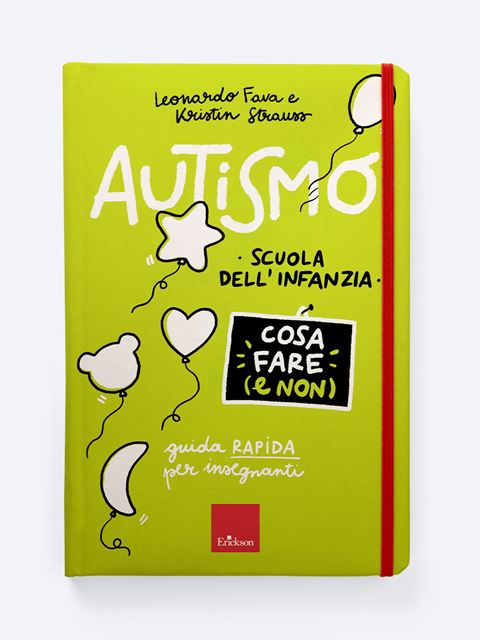
Product: Book
Trim size in cm: 14x21cm
Pages: 152
ISBN: 9788859035985
Publication date: 01/09/2024
Suitable for: Nursery 1st Level (ages 3-4), Nursery 2nd Level (ages 4-5)
REQUEST A SAMPLE OR MORE INFORMATION
 Rights sold to:
Brazil
Rights sold to:
Brazil
An agile and ready-to-use guide that offers nursery school teachers advice and suggestions to best manage children with autism at school. What attitudes should we adopt? Which ones should we avoid in specific situations? In the style of a Teacher Training notebook, the volume presents a series of analytical and practical tools in 15 chapters useful for successfully dealing with the difficulties that occur every day in the with pupils with autism.
What to do and what to avoid
Each chapter includes a brief overview of a specific behavior (what to keep in mind), indications on the intervention (how to intervene), suggestions and insights (advice from the expert and in-depth analysis). The teacher will be guided towards understanding the situations described through emotional, cognitive and behavioral reading.
Presentation
Introduction
Social interaction
1. He/She doesn't look at us like others
2. He/She prefers to be alone
3. He/She reacts badly in interactions
4. He/She does not pick up on social cues
Communication
5. He/She has difficulty understanding
6. He/She repeats words and phrases
7. He/She does not communicate adequately
Behaviour, activity and sensoriality
8. He/She is limited in play
9. He/She has narrow and absorbing interests
10. He/She has a hard time dealing with changes
11. He/She always repeats the same stereotyped movements
12. He/She reacts unexpectedly
Executive functions
13. He/She dysregulates suddenly
14. He/She is disorganized in carrying out actions
15. He/She gets lost in complex actions
Bibliography

Quick guide for teachers
Kindergarten
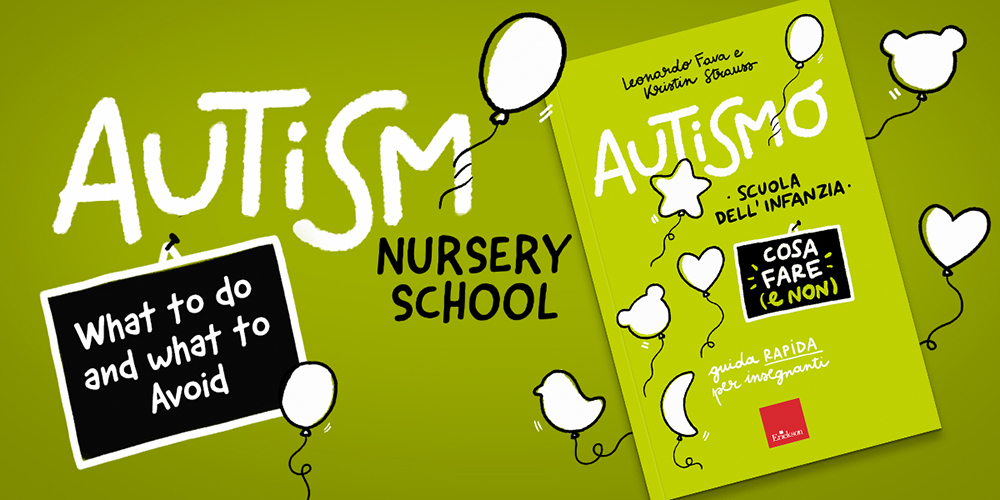
An agile and ready-to-use guide from the successful What to do and what to avoid series, which offers kindergarten teachers advice and suggestions for best managing children with autism at school.
What attitudes to adopt? Which ones should we avoid in specific situations? In the style of a Teacher Training notebook, the volume presents many analytical and practical tools useful for successfully tackling the difficulties that occur every day in class with autistic students in 15 chapters. The "trick" - according to the authors - is to be able to help the child reduce problematic behaviours and at the same time increase functional ones.
Attention! There is no magic spell, nor a single strategy valid for all cases, but the strategies must be applied in synergy and at multiple levels so that they have the desired effectiveness.
BOOK STRUCTURE AND CONTENTS
The 15 chapters presented in the volume are divided into 4 macro-areas:
The reason for each behaviour is initially explained in a few concise sentences (Why does she/he do this?), followed by simple and clear instructions for the teacher on the attitudes to adopt and avoid (What to do, What to avoid). This is followed by an in-depth analysis of the topic (What to keep in mind) and tools and strategies are provided on how to intervene regarding some crucial educational and didactic aspects. This aspect is further explored in the paragraphs dedicated to Structuring and lines of collaboration are drawn with parents and external school workers (The educational pact).
Each chapter:
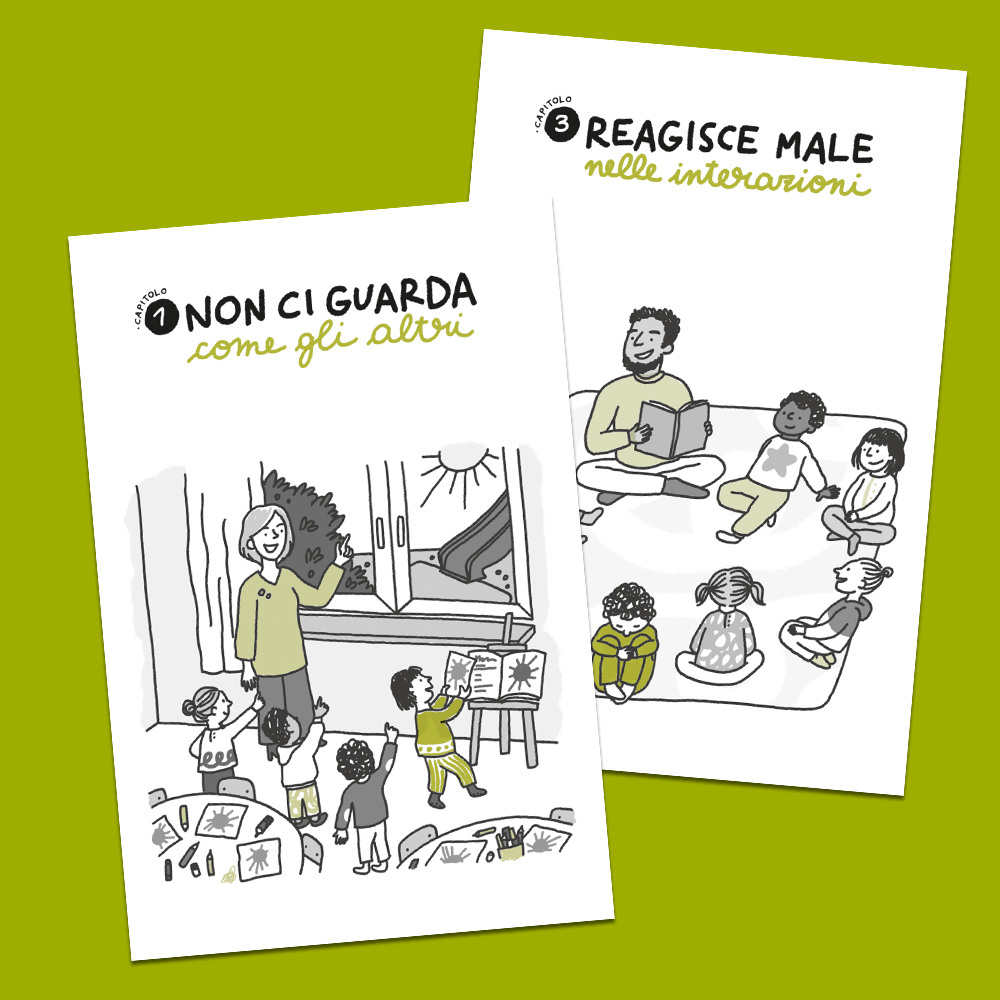
At the beginning of each chapter, a drawing introduces the analyzed behaviour .
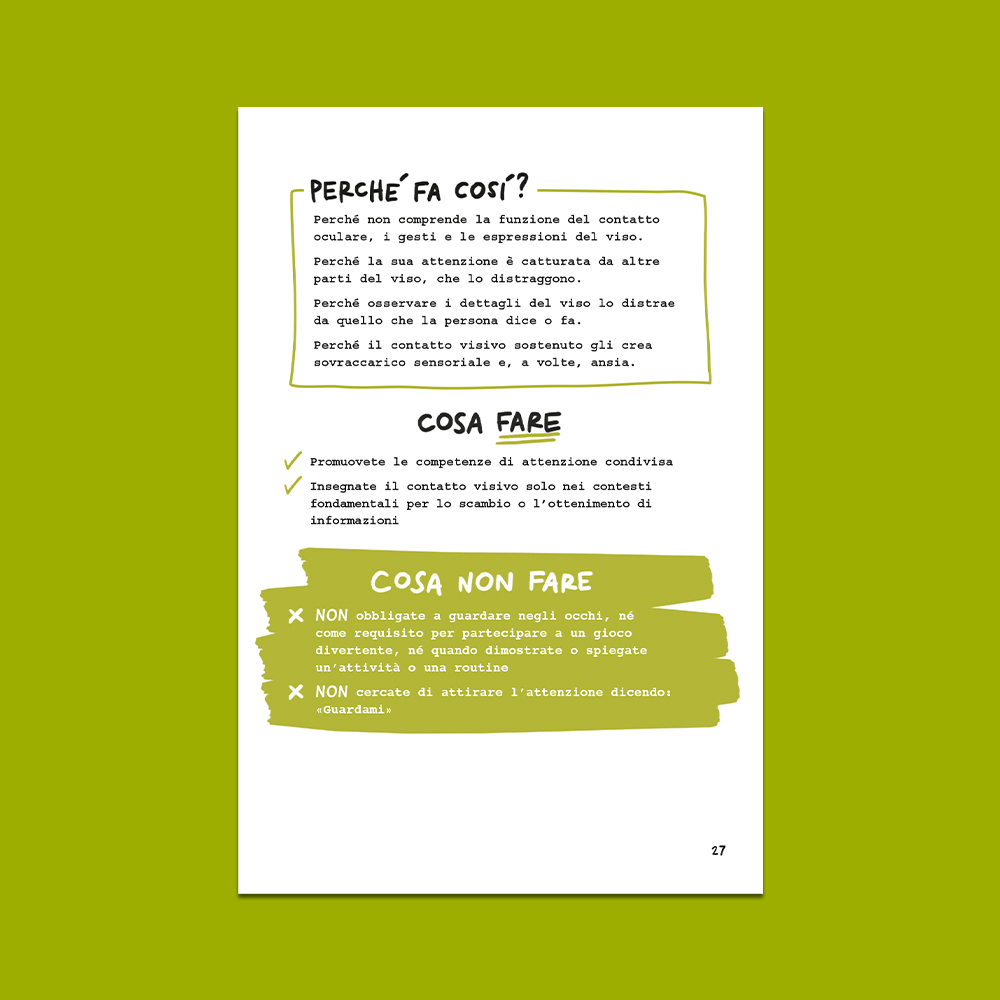
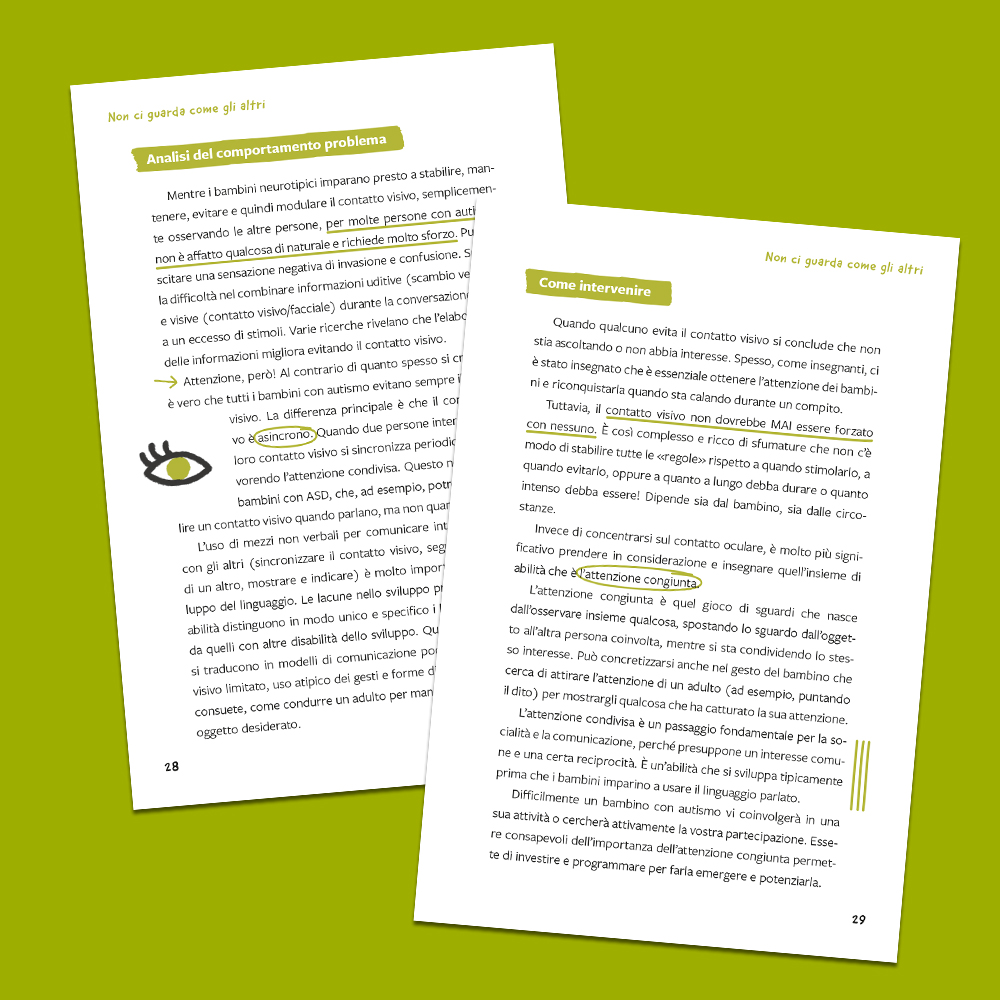
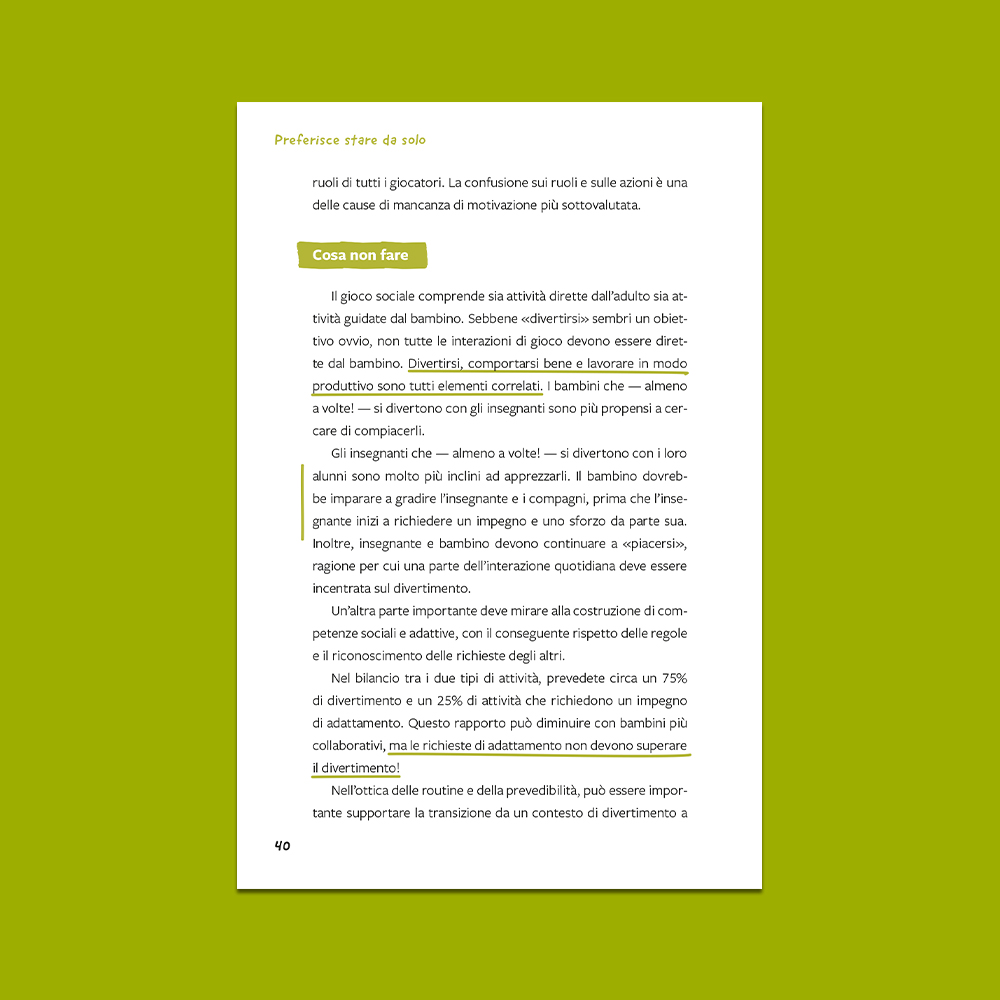
Each chapter closes with What to avoid: reflections to further understand and enrich the teacher’s “briefcase of educational tools”.
Leaf through some pages that have been translated into English to facilitate your evaluation:
THE AUTHOR
Leonardo Fava, psychotherapist specialized in the development of behavioral interventions for disabilities of all ages. He is the clinical director of the UmbrellAutismo facility for autism treatment, founder and president of the Umbrella Onlus Association for research and training in autism.
Kristin Strauss, founder and vice president of the Umbrella Onlus Association for research and training in autism. Her research interests focus on the development, adaptation and effectiveness of intervention programs for children with autism in the real world.